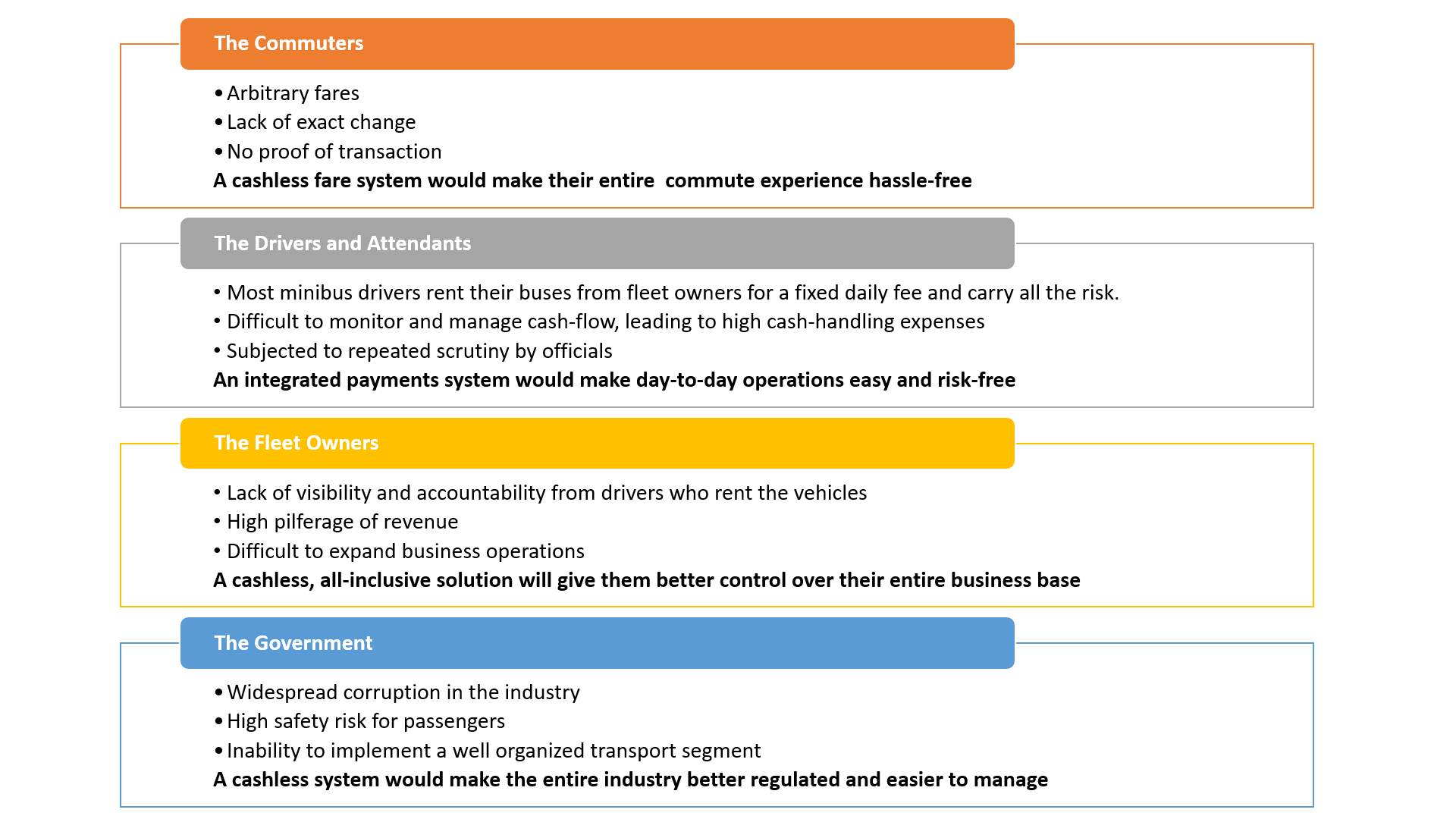By: Amita Tanksali
Africa has been at the heart of a digital payment revolution since the introduction of M-Pesa in 2007, in Kenya and its success went on to become a catalyst to the mobile money industry for the rest of the continent. Alongside M-Pesa, some of the other major players across Africa are MTN Mobile Money, Orange Money, and many others, all of whom now have reached a total of 470 million, this being many times more than the number of bank accounts.
So, what have these 470 million people been using mobile money for? Mostly for the purpose of remittance, payments and other fintech applications such as credit, aid distribution etc.
One industry that runs 100% cash-based is Public Transportation. However, by taking advantage of the cashless payments boom, the public transportation payments can be completely revolutionized.
As you would imagine, when dealing with such large amounts of cash transactions, every stakeholder involved faces a multitude of challenges every day, from the passengers to the operators. Adopting a cashless system to tackle these hurdles has the potential to completely transform the way commute works in Africa, which is why the public transportation industry should start taking advantage of the ongoing cashless payment trend.

Unique Transport Landscape in Africa
The African continent has one of the most unique public transportation environments in current times, comprised mainly of privately-run services like minibuses and motorcycle taxis. One of the main reasons for such an ecosystem is underinvestment in public transportation infrastructure.

In most countries globally, the public transportation services are run by the central or state governments. They are well-regulated and extremely convenient for commuters. Although informal modes do exist, they are a much smaller percentage. However, this graph makes evident that informal transit dominates Africa, especially Sub-Saharan Africa, with almost every country having over an 80% share in the market.
Distribution of Transportation

Distribution of Transportation in Kenya
As depicted in the chart above for Kenya, Public transportation in Africa largely comprises of Minibuses and Motorbike Taxis. As for buses or trains, most cities don’t even have that facility available.
To gain some perspective, there are more than 200,000 minibuses in South Africa, they transport over 15 million passengers every day and the estimated annual revenue for the industry is 5 Billion USD. This is a good reflection of just how large these informal paratransit services run across the continent.
Cashless Payments – Solving the Public Transport Ecosystem’s Challenges

The privately-operated public transport channels are usually very erratic and not managed very well. Most operators function with one objective in their mind – maximum earnings per day. For this, they make as many trips as possible with as many passengers as they can carry, every single day, creating many inefficiencies.
What are the challenges faced by the different stakeholders in this industry?

Demands of an ideal transport payments solution for Africa
Existing global solutions for cashless payments are designed for organized public transport, which also makes them quite expensive, and difficult to install and use for transport in Africa.
Such a unique ecosystem requires an equally unique payment infrastructure, one that moulds itself with the existing operational conditions. Here’s what makes an ideal solution for Africa –

Nearex’s Cashless Transport Payments Solution
The XIP technology created by Nearex, is extremely suitable for cashless payments in the unorganized sector. It has been widely used by leading transport operators such as MSRTC, India.
To know more about the solution, head to nearex.com


